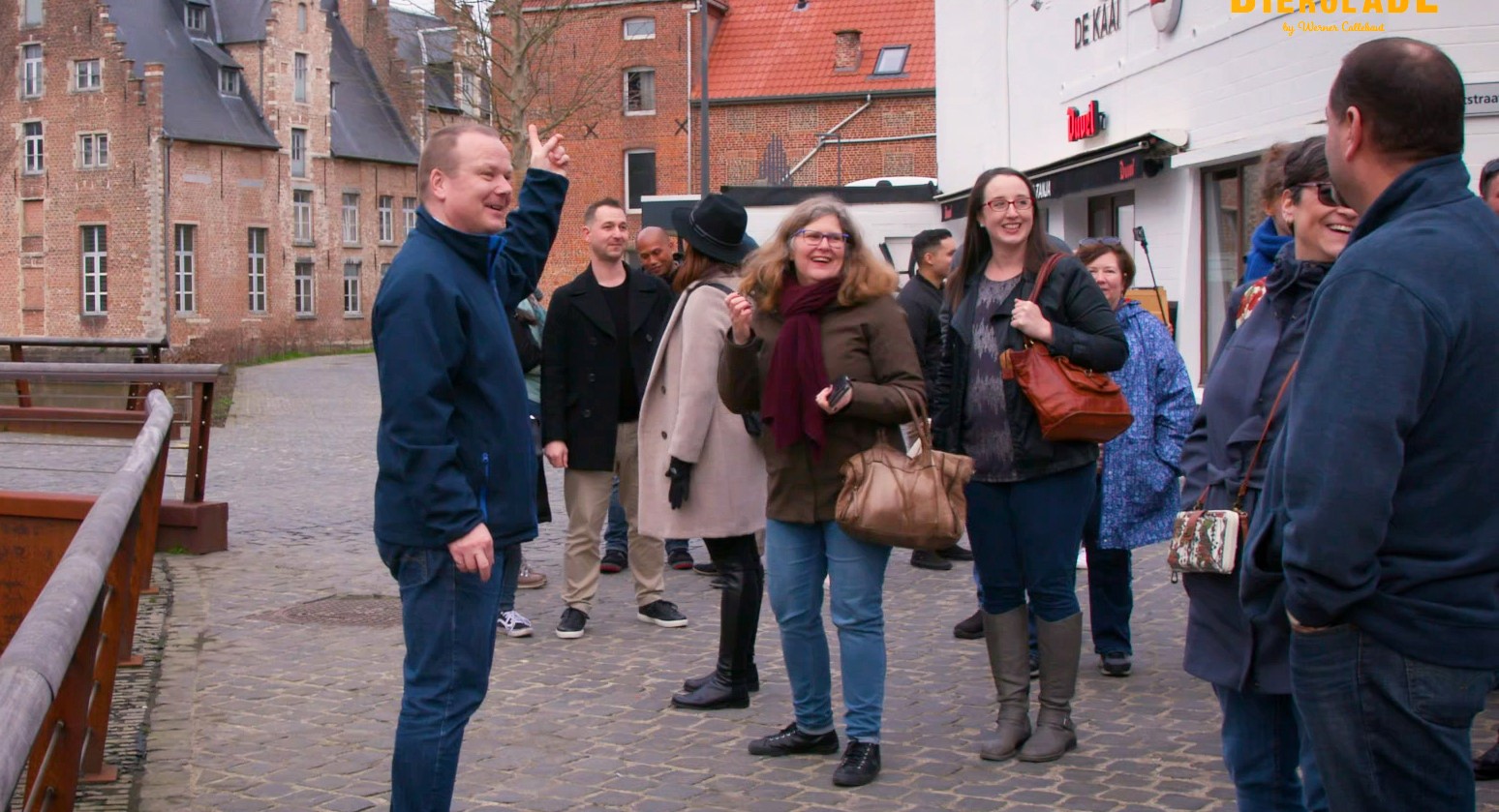- Daily & Weekly newsletters
- Buy & download The Bulletin
- Comment on our articles
Former beer capital comes alive during Guided Tours for Internationals
Twenty breweries in one street. Doesn’t that sound like paradise? That was once the case on Michel Theysstraat in Diest. But now there is just one: Loterbol. The small brewery produces four excellent beers, all in small batches and not easy to find.
That’s why there is usually a sizeable queue of people waiting to enter the brewery’s street-side bar on the first Saturday of every month – the only day the bar is open. But anyone taking part in Flemish Brabant’s tour of Loterbol and of Diest on 10 October will get to taste the beer as well.
The tour of Loterbol – and the whole town of Diest – is part of the Guided Tours for Internationals. These English-language tours take in the province that surrounds Brussels. There is no better way to explore Flemish Brabant, which is full to bursting with picturesque towns, majestic castles, quirky histories – and great regional beer. The tours kick off on 18 September.
On one sunny afternoon, The Bulletin joined in the tour of Loterbol and Diest. We learn from the head brewer how Loterbol is made and get a glimpse of the more than 100-year-old building. Loterbol celebrated its 25th anniversary last year, but its building was a brewery long before – one of 20 that lined this street in the first half of the 20th century.

Werner Callebaut of Bierolade leads a tasting of Loterbol beers and hand-picked chocolates
The final leg of the brewery tour is what prompts the most selfies: Old wooden wagons that used to deliver this building’s beer to shops and pubs. Still, the pièce de résistance is to follow: A tasting of all four Loterbol brews, paired with chocolate.
The chocolates come courtesy Werner Callebaut, owner of Bierolade, which arranges tours coupled with choc and beer pairings. He has carefully selected pralines to match every Loterbol.
With our Roodebol, for instance – made with sour cherries – we get a lovely dark chocolate with raspberry inside. “If you don’t care for sour beers, pair it with dark chocolate with a sweet fruit filling,” advises Callebaut (whose surname, by the way, is a coincidence).
The Americans in the group, however, prefer the dark chocolate praline with peanuts inside. Paired with a darker Sint-Jan, it tastes exactly like a Reese’s peanut butter cup.

After the tasting, our group heads out into the streets of Diest, about 50 kilometres northeast of Brussels. Led by Callebaut, we learn that the town was once the beer capital of Belgium. In the first half of the 20th century, there were 130 pubs here – “one for every 27 people,” he notes, “and that includes the babies”.
As we pass by the beloved statue ‘De Bierproever’, or The Beer Taster (pictured top), we soon discover that the town of some 24,000 people is criss-crossed by canals, fed by the Demer river, which runs along the north end of the city. Many of these waterways have been recently uncovered, often to great effect, such as around the Spijker, a former refuge for Tongerlo Abbey monks that dates from the 16th century.
Diest’s picturesque Grote Markt, meanwhile, is dotted with lovely guild houses and dominated by Sint-Sulpitius Church. It is an imposing example of ‘Demer Gothic’, popular in the region between the 14th and 16th centuries.
You can’t tell that from the front, however, which was added on to the building a century later. A lighter limestone was used, making for a jarring difference in colour as you turn the corner to see the rest of the church. According to Callebaut, Brussels authorities had much influence over this addition, and preferred the limestone to the more ‘provincial’ brown ironstone, native to the Demer region.

An ode to its former inhabitants at Diest’s begijnhof
We move on to Diest’s Begijnhof, one of the nicest examples of these heritage sites in Flanders. Home to religious women in centuries past, these villages within villages are Unesco protected and – while now inhabited by private owners and restaurants – are still glorious little places of refuge.
Diest has more sites to recommend it – a Citadel, town museum and provincial domain with an open-air swimming pool, to name a few.
Guided Tours for Internationals offers this tour of the brewery and town centre on 10 October. Also coming up as part of the series is a tour of the Beersel Castle and nearby geuze brewery, the story of Tervuren Park and its vibrant past, a foodie tour around Leuven and an exploration of the Sonian Forest. The tours are popular, so sign up now to ensure a spot.

















